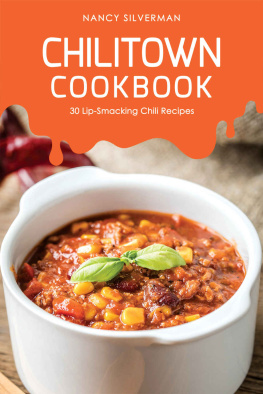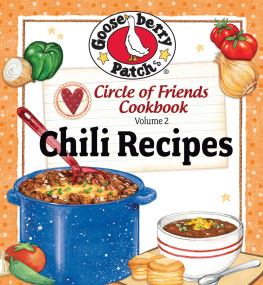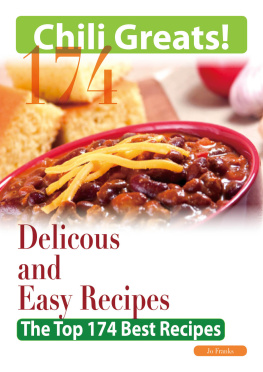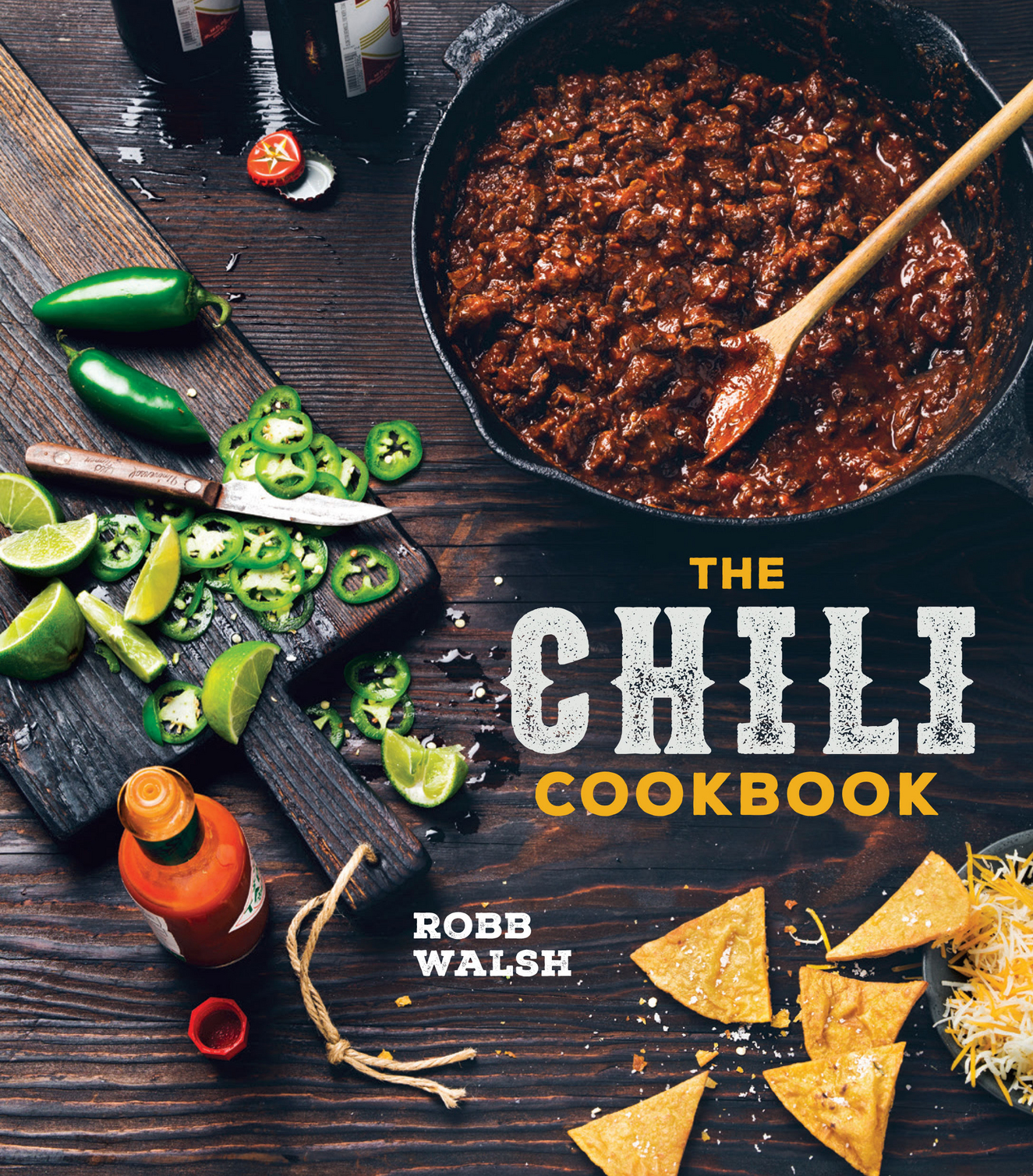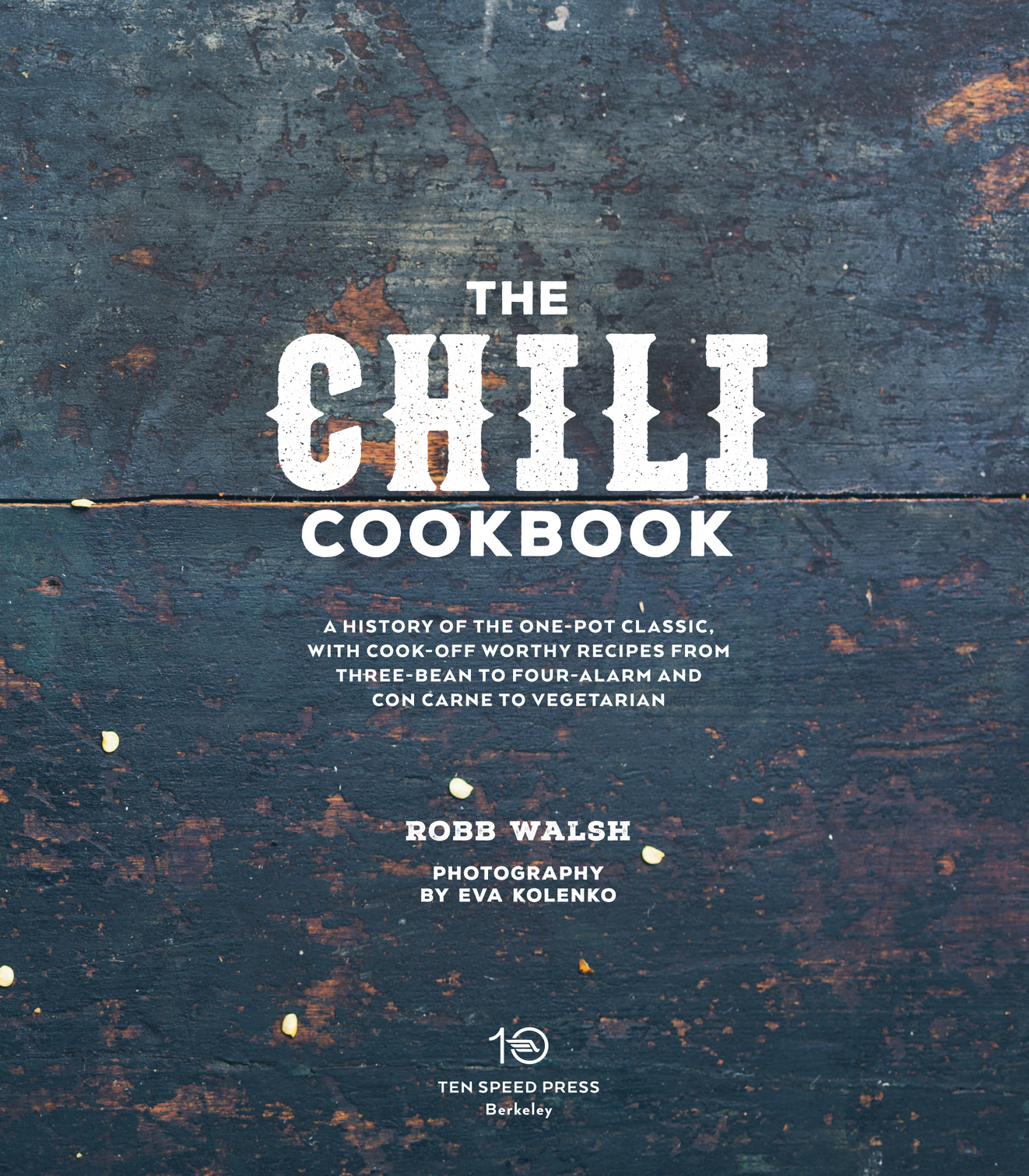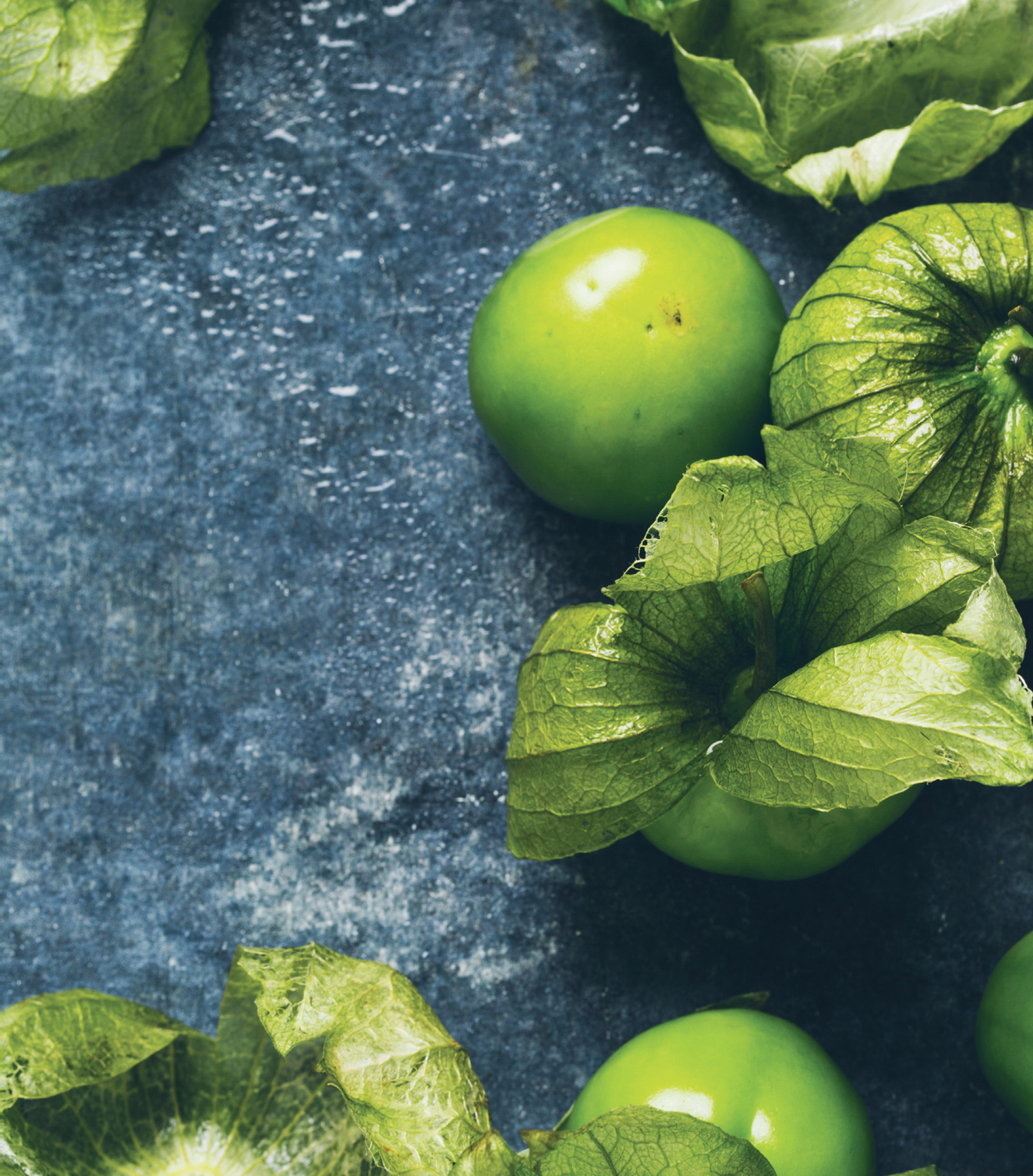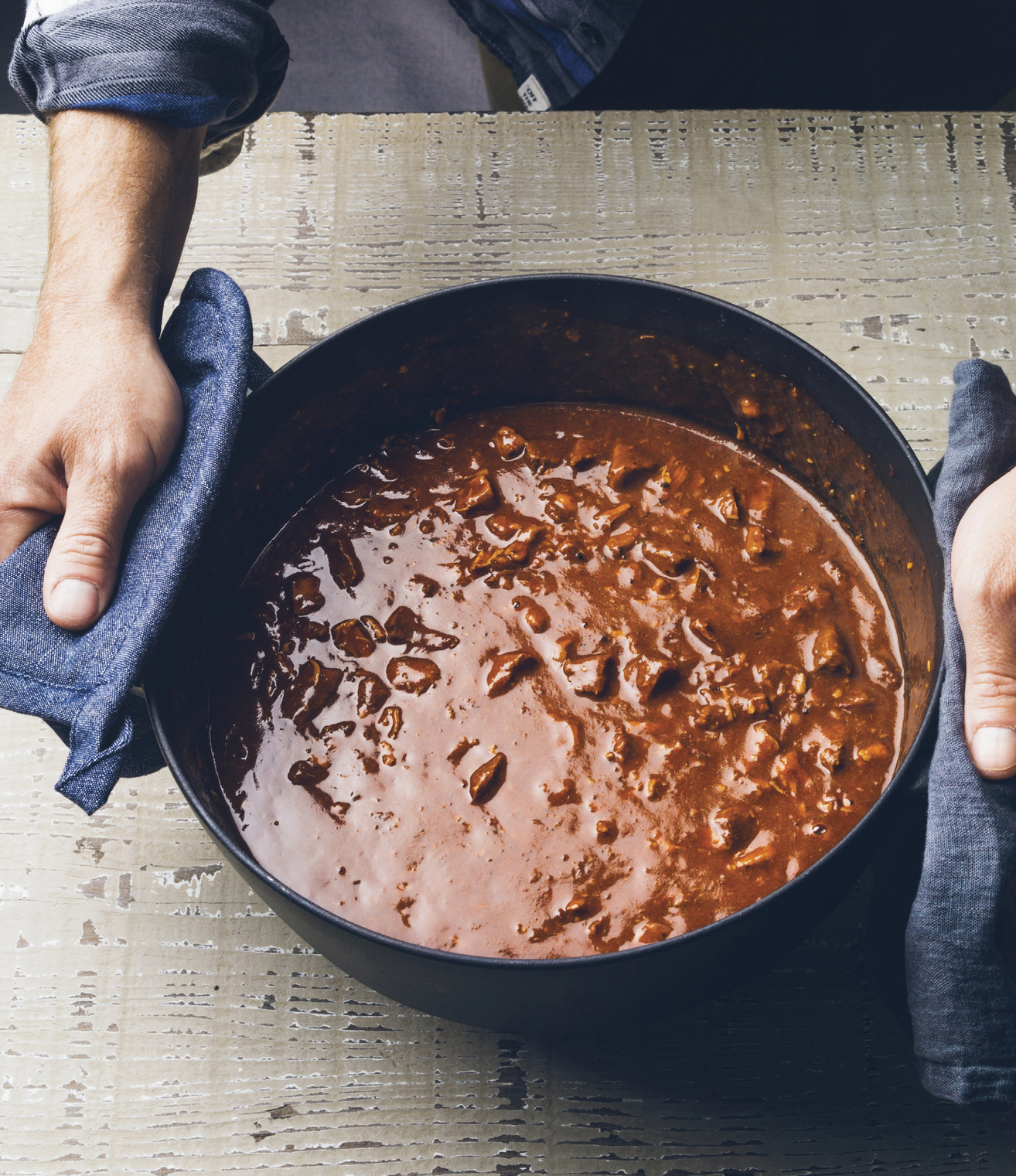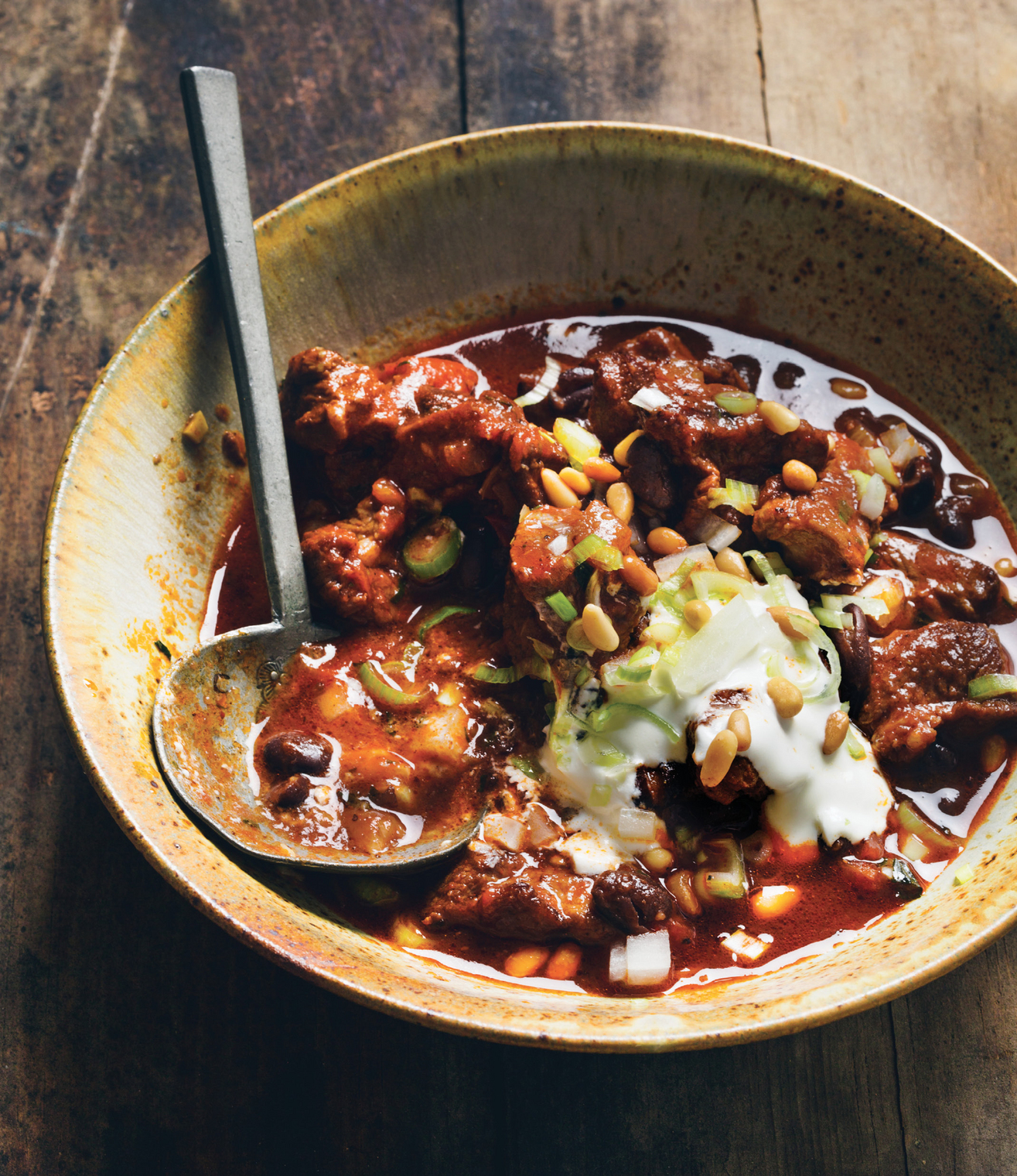All rights reserved.
Published in the United States by Ten Speed Press, an imprint of the Crown Publishing Group, a division of Penguin Random House LLC, New York.
Ten Speed Press and the Ten Speed Press colophon are registered trademarks of Penguin Random House LLC.
All photos are by Eva Kolenko except as noted on .
The chili cookbook : cook-off-worthy recipes for the one-pot classic, from three-bean to four-alarm, con carne to vegetarian / Robb Walsh ; photography by Eva Kolenko. First edition.
Includes bibliographical references and index.
1. Cooking (Hot peppers) 2. Cooking (Beans) 3. Chili con carne. 4. Cooking, AmericanSouthwestern style. I. Title.
INTRODUCTION
If chili is enjoying a revival lately, its not the second comingmore like the third or fourth, depending on when you start counting. The history of chili con carne is deep, dark, and very complicated.
Mexicans, Texans, New Mexicans, and Midwesterners have been arguing about chili for well over a century. They are still debating what it is, how to spell it, and who invented it. Other subjects of contention include: one L or two in the middle, I or E on the end; tomato versus no tomato, beans versus no beans, ground meat versus hand chopped, and disputes about spices so arcane, they defy rational explanation.
As a partner in a Tex-Mex restaurant where we serve gallons and gallons of Texas chili every day, I have to confess that I am not an objective observer. But as a student of food history and an enthusiastic consumer, I put my preconceptions aside long enough to research this book. And I was richly rewarded with good chili from unexpected places and amazing (sometimes true) tales.
This book delves into the five hundred years of chili history beginning with the Aztec chile stews the conquistadors sampled in the markets of Montezuma in the 1500s and includes chili recipes inspired by the Spanish mission era of the 1700s, when the first chile peppers were cultivated in
North America and the cattle-herding traditions of the Texas cowboys were born.
Several chapters focus on Texas chili, including the San Antonio version of the 1800s, the heyday of the Chili Queens and the Chicago Worlds Fair of 1894 where Tex-Mex chili created a sensation. The spread of chili across the Midwest in the 1900s takes us for a trip down that highway of memory called Route 66. There are side trips to Ohio, Michigan, and Washington, DC. And finally, we return to the twenty-first century home kitchen, where chili has taken on a new identity as the most modern of American dishes.
If you love chili, you will probably find some of the recipes in this book comforting and some of them vexing, especially if youre a purist with firmly held ideas about beans or spaghetti or whatever. Suspend your disbelief for a just a bit and trust your taste buds.
The modern recipes in the book include lamb chilis, pork chilis, chicken chilis, shrimp chili, and yes, even a whole chapter on meatless chilis (because vegetarians have to eat, too). Recipes for Hungarian goulash, Pakistani keema, and Greek spaghetti sauce are also included as part of my argument that each has played a part in chilis colorful history.
Some of the cooking instructions are ridiculously simple, and some are more ambitious. Cooking methods have evolved from cast-iron pots on the campfire to the modern stovetop, and now include convenient slow-cooker variations that you can start in the morning and eat when you get home from work.
Read a few of the stories and try a few of the recipes collected here, and you may come to the same conclusion I didthat chili is both a quintessential American dish and a part of an ancient chile pepper culture that has become deeply ingrained in the whole worlds cooking.
CHILI KITCHEN NOTES
Before we get started, lets make sure were all on the same page when it comes to equipment and ingredients.
Equipment Most recipes in this book call for a Dutch oven, meaning a heavy-duty pot with a 5- to 7-quart capacity and a lid. You can substitute a soup pot, stew pot, or any other vessel that comfortably holds the amount of chili you require, but to avoid burning, I recommend cast-iron, enamelware, or any heavy-duty pot made with multiple layers of metal, such as All-Clad. Most chilis do extremely well in the slow-cooker (see ).
Ratio The basic ratio of ingredients that go into a well-seasoned chili was established by spice manufacturer and chili pioneer ). His formula calls for 2 pounds of meat to 1 ounce (4 tablespoons) of chili powder to 4 cups of liquid. Standard additions include garlic, onions, and canned tomatoes.
Meats Beef was central to the old-fashioned chilis of the nineteenth century; however, even in those days venison and bison were common alternatives. Turkey chile stew goes back to the pre-Columbian era. Pork and lamb are excellent modern choices. In other words, use what you have or what inspires you.
Meat Prep In the earliest days of chili, meats were chopped or minced by hand, but ground meats have become more typical and are certainly convenient. Chili grind is a term used by Texas butchers to describe meats that have been coarsely ground using a -inch plate. It is ideal if you are looking for a more old-school texture but dont want to go to the trouble of hand-chopping your meat.
. Its also a favorite thickener in Texas-style chili con carne. The most common brand of masa harina in Mexico and the United States is Maseca; its available in any grocery store that sells Mexican ingredients.
Serving Size For the recipes in this book, one serving of chili is a generous cup. Figure on using a cup if you want an appetizer-size serving.
Leftovers and Storage , consider freezing the chili in several containers so you can thaw only the amount required.



